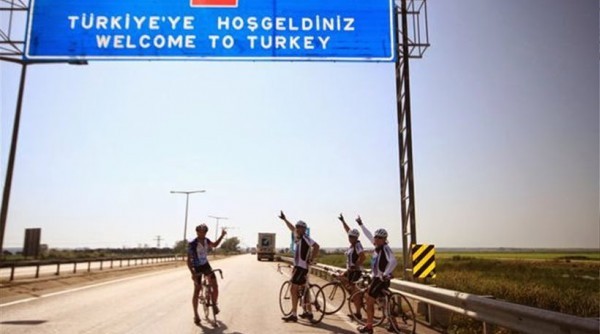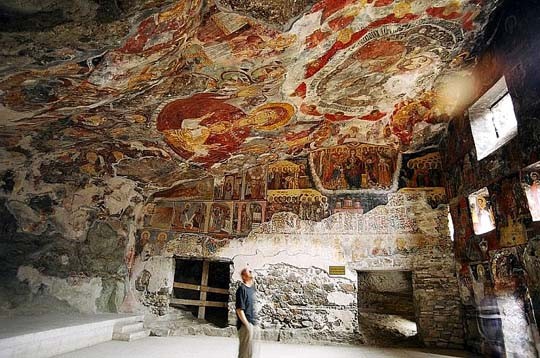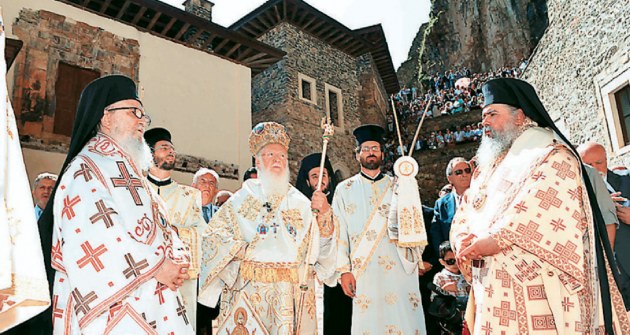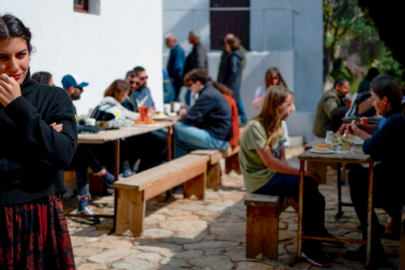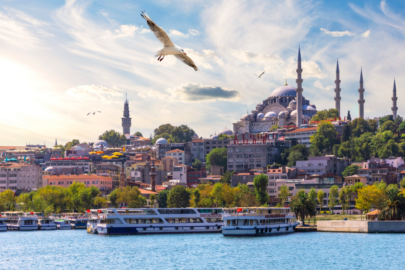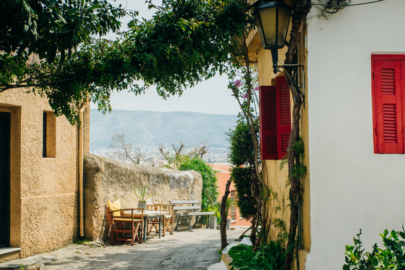Three cyclists from Thessaloniki – 47-year-old Pantelis Tzertevelis, 41-year-old Vassilis Giosmas and 67-year-old Panagiotis Sotiriadis – set off on a pilgrimage on August 1 from one Panagia Soumela Monastery in Greece to another Panagia Soumela Monastery in Turkey. They arrived just in time for the feast of the Assumption Day on Friday where thousands flock to both these monasteries to celebrate the Dormition of the Mother of God.
The journey spanned over 2,000 kilometers and took two weeks to complete. They claim that it tested their resilience and they only managed to complete it “with the help of Mother of Christ.” On Friday, they will visit the monastery to make their pilgrimage and leave their offerings, including those given to them by people they met along the way. They will also light candles they brought with them from the Greek Panagia Soumela monastery on Mt. Vermio – bridging the two monasteries with one flame.
The toughest part of the journey according to the three men, all past their prime, was the ride across the mountains just 200 kilometers after Istanbul up to Sinop. They attribute their ability to keep pedaling to strength given to them by the Holy Mother herself. They also praised the support of the Turkish people and were impressed at how they made friends along the way and even drew the attention of the local Turkish media.
Pilgrimage ends at The Panagia Soumela Monastery, Trabzon, Turkey
The “Virgin Mary of Soumela” is a spectacular monastery perched dramatically on the narrow ledge of a steep cliff in the forests south of Trapezounta in Pontus. The name “Soumela” means “at mount Melas”. Built in 386 A.D. by two Athenian priests – Barnabas and Sophronius – who, legend says, found a miraculous icon of the Virgin Mary in a cave. Tradition says the icon was painted by St. Luke the Evangelist and it predates the historic monastery where it was kept for centuries.
It violently stopped its operation in 1923 when the monks were forced to flee following the genocide of Greeks in Asia Minor, including Pontus, by Turks. Despite its remote location it often fell victim to ethnic violence and its beautiful frescoes today suffer from decades of pointless vandalism.
On Sunday, August 15, 2010, Ecumenical Patriarch Bartholomew I conducted the first Divine Liturgy in 88 years at the historic monastery marking the first official religious service there since the foundation of the modern Turkish Republic.
See a video of an old Pontian song that was performed at the end of the 2010 mass –
Since then, the Feast of the Annunciation is celebrated every year at Panagia Soumela. Today is the fifth year for the service to be conducted by Patriarch Bartholomew I.
Cyclists began pilgrimage from the Panagia Soumela Monastery in Imathia, Greece
Greek Prime Minister Eleftherios Venizelos met with Turkish Prime Minister Ismet inonu in 1931 and asked for his permission to send monks to the Mt. Mela monastery to retrieve the icon and other sacred treasures. Once there, they unearthed the sacred icon that had been buried along with other sacred objects. These were then deposited at the Benaki Museum for 20 years.
In 1950, Dr. Philon Klenides and his fellow Pontic Greeks built a new Soumela monastery at Kastania of Vermio – chosen because it reminded the doctor of the wild beauty of the heights of Mt. Mela.
The miraculous icon was enthroned at this new monastery on August 15, 1952. Thousands of pilgrims come here every year to venerate the holy and historic icon.




